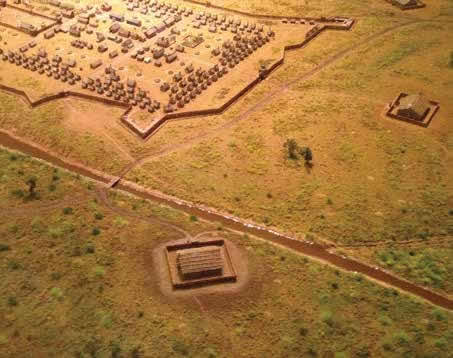General Anthony Wayne was an important figure during the early formation of the American military. He led troops against the British during the American Revolution and was appointed commander-in-chief of the United States Army by President George Washington. During the 1790s he established a number of military forts along the Northwestern frontier of the United States as westward expansion continued. One of those forts, built in 1793 in what would soon become western Ohio, was Fort Greenville.
At the time of its construction Fort Greenville was the largest wooden fort in North America, covering over 50 acres. General Wayne ordered that eight blockhouses be built about 250 yards away from the main fort to provide an initial line of defense. Two years later, Fort Greenville would be immortalized by the signing of the Treaty of Greenville on August 3, 1795, which ended the Northwest Indian War and laid the groundwork for Ohio to become a state in 1803.
The fort was abandoned in 1796 and most of its ruins were destroyed as the town of Greenville sprang up on the site. The remains of Blockhouse 8, located across Mud Creek from the main fort, were preserved in a field for more than 200 years and largely forgotten until amateur archaeologist Tony DeRegnaucourt and others found them in 2002.




